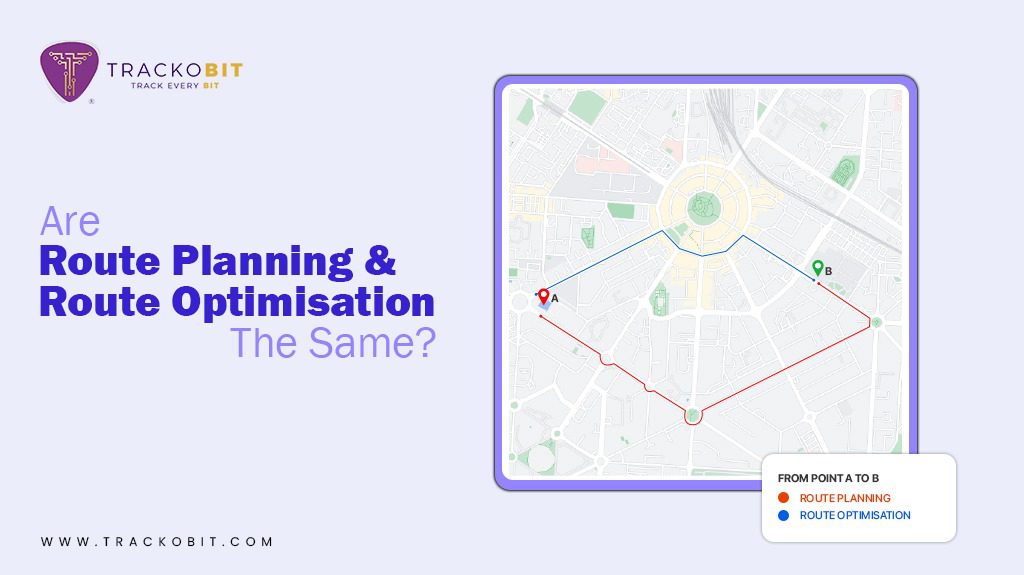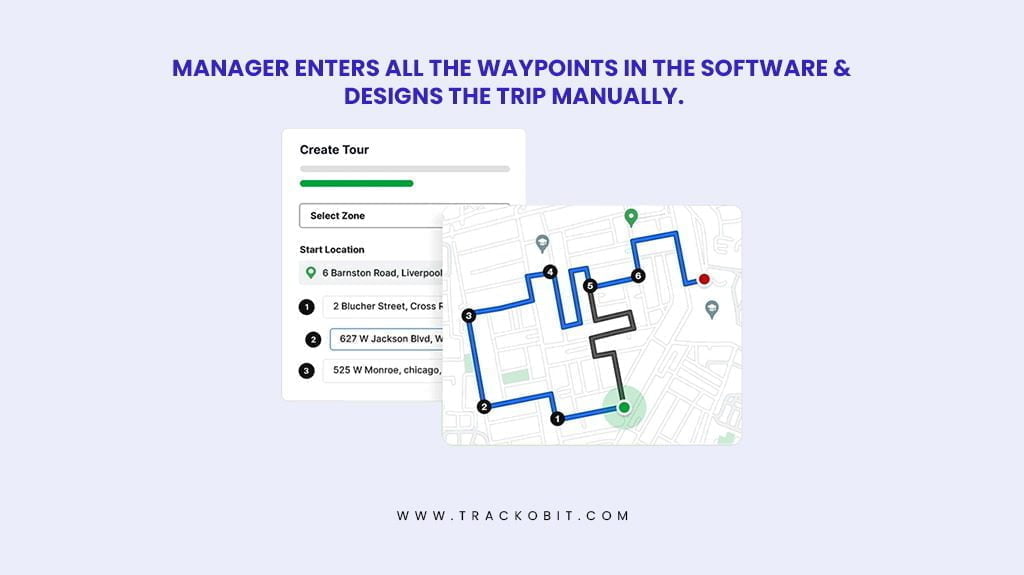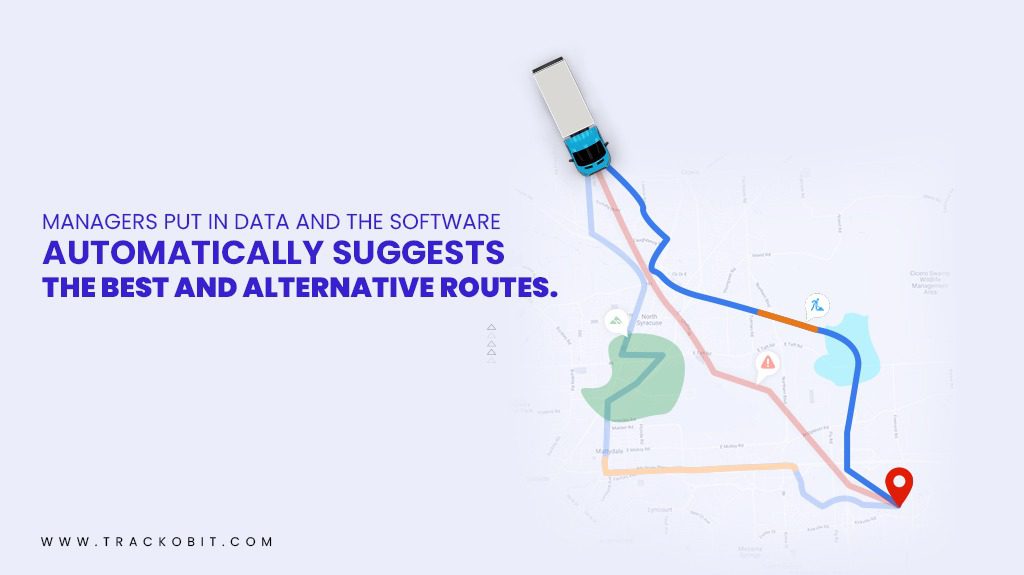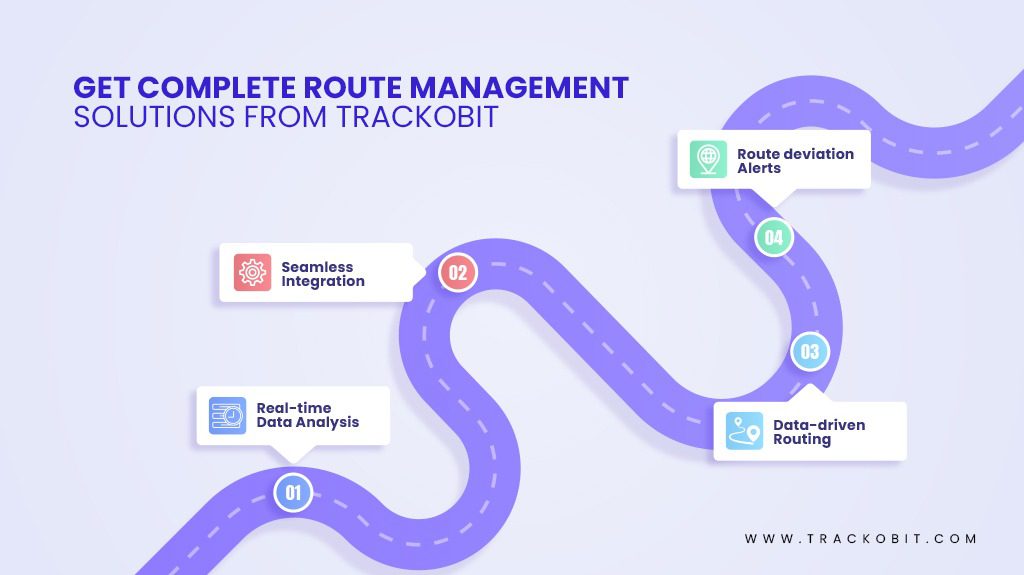-
TrackoBit
Manage commercial vehicles with the new-age Fleet Management Software
TrackoBit -
TrackoField
Streamline your scattered workforce with Field Force Management Software
TrackoField -
Features Resources
-
Blog
Carefully curated articles to update you on industrial trends. -
White Paper
Insightful papers and analysis on essential subject matters. -
Glossary
Explore an alphabetical list of relevant industry terms. -
What’s New
Get TrackoBit & TrackoField monthly updates here. -
Case Study
Explore the cases we solved with our diverse solutions. -
Comparisons
Compare platforms, features, and pricing to find your best fit.
-
About Us
Get to know TrackoBit: our team, ethos, values, and vision. -
Careers
Join the most dynamic cult of coders, creatives and changemakers. -
Tech Support
Learn about our technical support team and services in detail. -
Events
Check out the exhibitions where we left our marks and conquered. -
Contact Us
Connect with us and let us know how we can be of service.
How Are Route Planning and Route Optimisation Not The Same?
- Author:Ayushi Nagalia
- Read Time:10 min
- Published:
- Last Update: December 17, 2025
Table of Contents
Toggle
Using the terms route planning and route optimization tools from fleet management software is a mistake you just avoid to get the most out of both the systems. Both serve their unique purposes.
Table of Contents
Toggle
Fleet management is a complex system made up of multiple components that are interdependent. If one thing – such as route planning – goes bad in the fleet, everything else – such as productivity and profits go down as well.
With the arrival of advanced technology, such as telematics and IoT. commercial fleets have undergone a major transformation. These technologies have made fleet management simpler with advanced tools like route planning and route optimisation – allowing managers to manage the best possible ways to run their fleet.
In this blog, we will bust the common myth about route planning and route optimisation being interchangeable terms. We will talk about both the systems, what they mean and offer, and how you can use them at the right time to maximise your profits.
What Are Route Planning Solutions?

Route planning is determining and associating optimal routes to the vehicles in your fleet. Your vehicles then need to follow these pre-planned routes to fulfil their tasks and trips.
Route planning helps managers streamline operations and boost their bottom line by choosing routes that increase efficiency, cut expenses, and improve safety. Therefore, route planning becomes an important aspect of fleet management.
However, route planning solutions are pretty much manual. Managers have to sit with the map on the software and determine the best possible routes according to the data provided. Moreover, in case of any ad-hoc trips or changes, they have to go through the cumbersome manual yet detailed process all over again.
Factors Considered While Planning Routes
When planning a route, several routing aspects need to be taken into account. Some of these aspects include
- The distance to be travelled
- Traffic patterns
- Weather conditions
- Road closures
- Time of the day
- Customer requirements
- Vehicle limitations
- Area limitations
The purpose is to design a route that minimises travel time, consumes least possible fuel, and maximises delivery safety. Therefore, with the right fleet management system and its route planning solutions, your vehicles are guaranteed to get to their destination as quickly and efficiently as possible.
Benefits of Route Planning Systems
Companies using route planning solutions to streamline their operations can expect some of the following benefits:
- Reduce fuel costs
- Increased productivity
- Minimised vehicle wear and tear
- Reduced labour costs
- Maximised fleet safety
- Speedier deliveries
- Better customer relations
Limitations of Route Planning Solutions
From the above descriptions, it might seem like all the fleet-centric businesses in the world should definitely use route planning systems. So, why is it that a huge percentage of businesses still work on manual route management systems? Let us look at some of the most significant limitation to adapting route planning solutions:
- Software costs
- They are not bullet-proof
- Manul route mapping and associating
- Restrictive to drivers
What Are Route Optimisation Solutions?

Route optimization goes a step further than route planning by being the continuous process of managing routes for your fleet. Therefore, it doesn’t just suggest one effective route for every situation and vehicle but also allows the possibility of choosing the most effective route in real-time according to live changes in road, vehicles, or road conditions.
Route optimisation entails assessing all of the journey’s data and offering multiple routes that have their own benefits and drawbacks. The final decision is in the manager’s hands. Route optimisation also massively helps when each trip needs to cover more than one stop point.
The primary purpose of route optimization solutions is to ensure that managers do not have to manually plan routes according to data or make changes due to minor inconveniences.
Factors Considered WIth Optimising Routes
The factors considered in route planning and route optimisation efforts are more of less the same. However, here are a few added things over the basic distance and time that the software need to consider:
- Number of vehicles in the fleet
- The load each vehicle can carry
- The number of stops
- Availability of resources
- Current road conditions
- Live weather conditions
Most of these factors are looked into in real-time because it allows the software to make quick changes to the route if required.
Benefits of Route Optimisation Tools
Some of the major benefits that anyone using route optimisation tools will experience are:
- Lowered operational costs
- Improved functional efficiency
- Higher customer and driver satisfaction
- Best resource allocation
- Optimised admin time
- Ability to deliver at multiple stops on the way
- Minimised delivery time
- Sustainable operations
Among this huge list, the biggest benefit to come is from the fact that route optimisation allows multi-stop trip planning and also changes things according to current situations. Resource allocation optimization goes up to crazy levels with this tool!
Limitations of Route Optimisation Systems
The reason why not all businesses use route optimisation tools is:
- Software costs
- High software learning curve
- Only required for larger fleets
- Needs reliable data
To expand on the last point, if the data collection is stopped or if bad data is fed to the software, the results delivered would be subpar at best. And nobody wants to get mediocre results from such a powerful tool, right? That is why it is extremely important to use a fleet management software with high-end data collection and analysis capabilities.
Difference Between Route Planning and Route Optimisation
Both route planning and route optimisation fall under the larger route management solutions offered by fleet management software. While they seem to be quite similar (if not the same), they do have some major distinctions. Let’s discuss them in this section.
Objectives
Route planning devises efficient and effective routes to and from each driver’s start and end destination. The goal of route planning is to guarantee that drivers follow the most direct route possible while taking into account issues such as traffic, weather, and road closures.
Route optimization, on the other hand, is the process of determining the most effective route for many drivers and stops. Route optimization’s goal is to reduce travel time, fuel consumption, real time road updates, and total operational expenses while enhancing customer satisfaction.
Data and Factors Considered
Both route planning and route optimisation rely on a variety of factors and an array of data to build and allocate effective routes . Data such as traffic patterns, road closures, and weather conditions are taken into account during route planning. Additionally, information regarding the driver’s vehicle such as fuel efficiency, payload capacity, and vehicle size is considered.
Data concerning the number of stops, the location of each stop, the delivery time, and traffic conditions are all taken into account during route optimization. Data such as driver availability, vehicle capacity, and schedule constraints are also considered while teh software works on route optimisation tools.
Execution
Fleet managers typically plan routes manually, using software and collected data to develop efficient routes for each trip. These routes are then shared to the driver’s app to avoid any confusions.
Route optimisation on the other hand, is typically automated. It uses sophisticated software to optimise routes for several drivers and stops at the same time. Multiple combinations are used by the program to discover the most effective routes among drivers. This is an especially important tool for last-mile delivery.
Resolution Automation Offered
Route planning can be automated to some extent, but decisions about issues such as vehicle capacity, route deviation, and driver availability still require human input.
Whereas route optimization is nearly totally automated and can even alter routes in real-time based on changing conditions such as traffic congestion.
Is One Solution Better Than The Other?
After reading the above sections, the obvious response for most readers would be – well, we do not need route planning as long as we have route optimisation. The latter fulfils all tasks that route planning can do – so why bother?
But, it is important to understand that fleet management software comes with both solutions for a reason. In this section, let us look at reasonings for both solutions and determine if one is better than the other.
Arguments for Route Planning
When compared to route optimisation, route planning might seem like a small feature. However, let us look at places where only route planning will work, and route optimisation might become counter-effective.
- Limited Resources: Fleet managers may only have a limited amount of time or money to devote to optimization. In such circumstances, using a route optimization method may be impractical because it would necessitate additional resources to operate efficiently.
- Inflexible Routes: Alternate routes don’t always work the charm. Sometimes static and manually created routes are important. After all, there is so much that a computer and AI do. Human routes become important in cases such as unsaid company protocols, personal understandings, security reasons, etc.
- Unpredictable Traffic: Route planning may be a preferable option when traffic is unexpected, such as in locations with frequent road closures or significant congestion. It enables fleet managers to plan for probable delays and alter routes as needed.After all, not everything is possibly uploaded on the software or available online.
Arguments for Route Optimisation
Route optimization can provide considerable benefits to fleet management, especially in terms of increasing efficiency and lowering expenses. While route planning might be powerful in a lot of cases, route optimisation is necessarily required in some of the following caseS:
- Large Fleets: Manually setting routes, even with software aid, can be daunting for large fleets. Route optimization can help streamline operations and guarantee that each vehicle takes the most efficient route without the managers having to be involved at all times.
- Dynamic Routes: Static route planning fails when a change in road or market condition demands a change. Dynamic route optimization is required to make real-time route adjustments based on traffic and other factors. This can guarantee that the vehicles take the most efficient route, automatically and always.
- Last-mile Delivery: Route optimisation becomes exceptionally important when there are multiple delivery points, that too on tight scheduled windows. Route planning will fail in such a complicated route management requirement.
The Verdict
Well, it is clear as day! Both route planning and route optimisation are very important features, and no one is better than the other. After all, there are some instances where route optimisation would raise havoc and some instances where route planning will just not cut it!
So, whatever would be the ideal solution for your fleet, choose your fleet management software accordingly.

How TrackoBit Supports Both Route Planning and Route Optimization
As we know by now, route planning and optimisation are both really important tools to work with. So, in this section, let us look at all the ways TrackoBit’s route management solutions can help you make the most out of both route planning and optimisation.
Real-time Data Analysis
TrackoBit collects and analyses real-time data about cars, drivers, and traffic conditions. This information is crucial for effective route planning and optimization because it enables fleet managers to make educated judgments about the best routes to travel.
Automation of Route Planning and Optimization
Our route planning and optimization software automates the process, removing the need for manual input and lowering the chance of errors. This automation saves time and money compared to human planning.
Optimization of Routes
Fleet management software optimises routes by taking into consideration factors like distance, time, and traffic conditions. This guarantees that the fleet’s routes are the most efficient and cost-effective.
Route Deviation Alerts
If a vehicle deviates from its scheduled path, TrackoBit can send notifications to managers, allowing for immediate intervention and route correction if necessary. This helps the route management system, and the vehicles always stay on track.
Direct Your Business To The RIght Route Now!
If you are looking to make your fleet functions 10x better, you should definitely look for a fleet management software like TrackoBit that can help you do that! After all, your entire fleet and the business will stay on track only when your vehicles do, right?
Ayushi Nagalia is a Senior Content Specialist at TrackoBit. She is a marketing maverick with a lush background in literature. With years of experience crafting content for various niches, she speciali... Read More
Related Blogs
-

When Tracking Needs a Clock: Rethinking Fleet Visibility
Tithi Agarwal December 24, 2025Read on to understand why fleet tracking works better when it follows working hours. Because visibility should support operations, not…
-

What Makes TrackoBit’s Video Telematics Software Truly Next-Gen?
Shemanti Ghosh December 17, 2025TrackoBit’s video telematics software blends smart video intelligence with full server control. The result? Superior fleet reliability and safety.
-

Plug, Pair, Perform TrackoBit Introduces BLE Sensor Integration
Tithi Agarwal November 26, 2025TrackoBit’s BLE Sensor Integration enables wireless, real-time monitoring with faster installs and accurate insights. It improves fleet efficiency, visibility, and…
-

How to Use Driver Behavior Reports as a Sales Hook to Close Big Fleets
Tithi Agarwal October 16, 2025TrackoBit’s driver behavior reports empower fleet providers to win big contracts by showcasing safety, efficiency, and measurable ROI.

Subscribe for weekly tips to optimize your fleet’s potential!
Your inbox awaits a welcome email. Stay tuned for the latest blog updates & expert insights.
"While you're here, dive into some more reads or grab quick bites from our social platforms!"Stay Updated on tech, telematics and mobility. Don't miss out on the latest in the industry.
We use cookies to enhance and personalize your browsing experience. By continuing to use our website, you agree to our Privacy Policy.

































